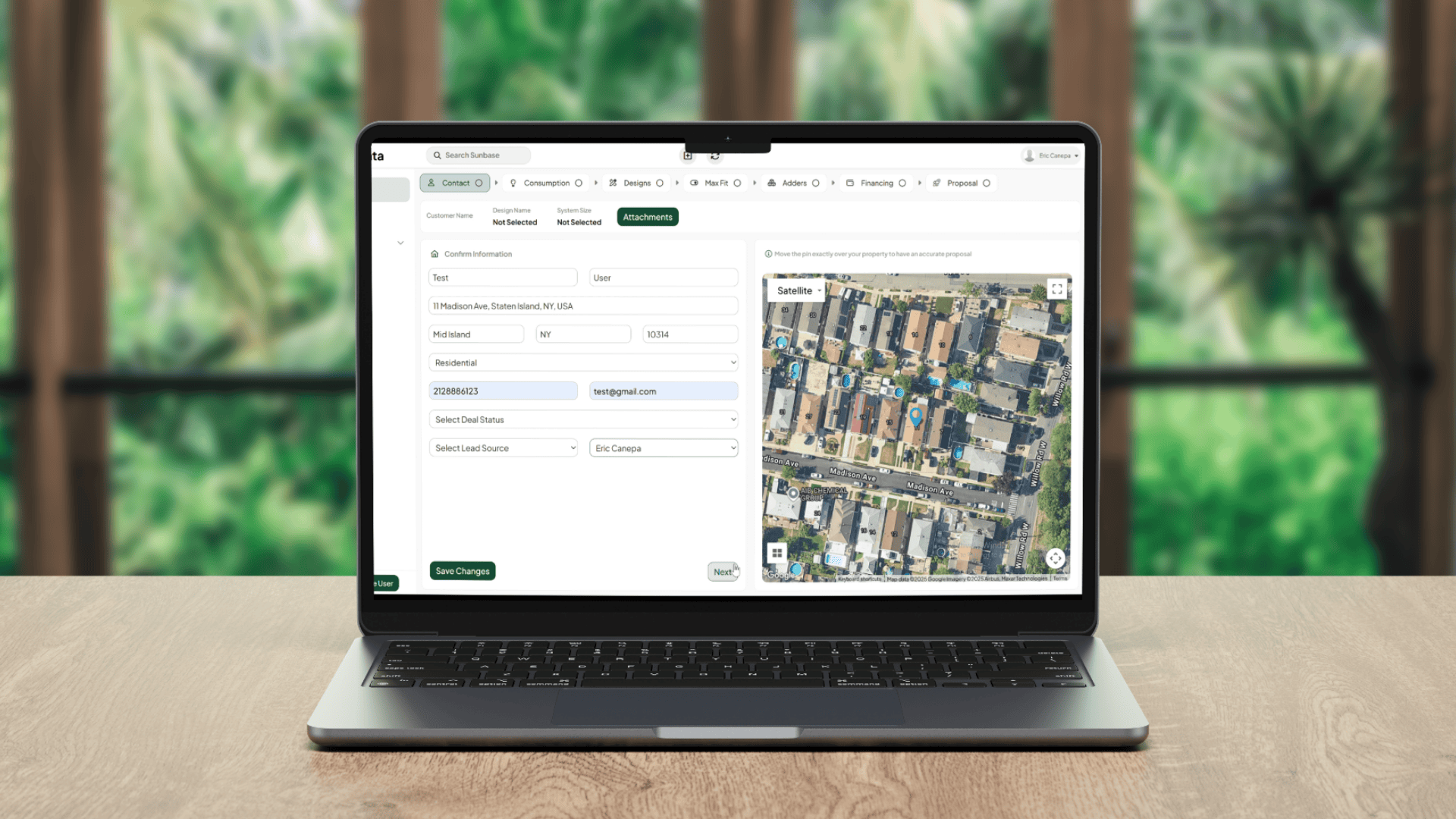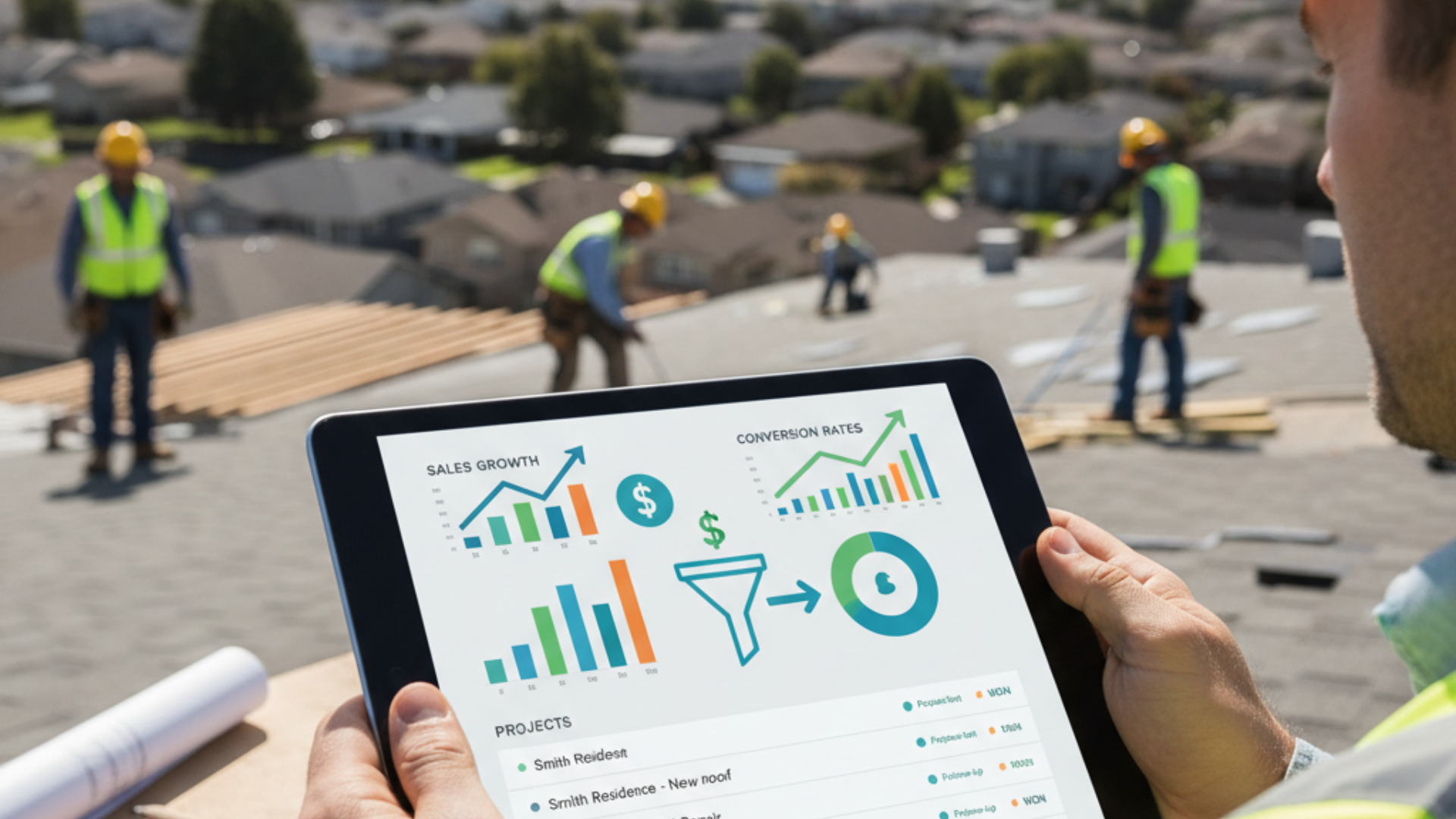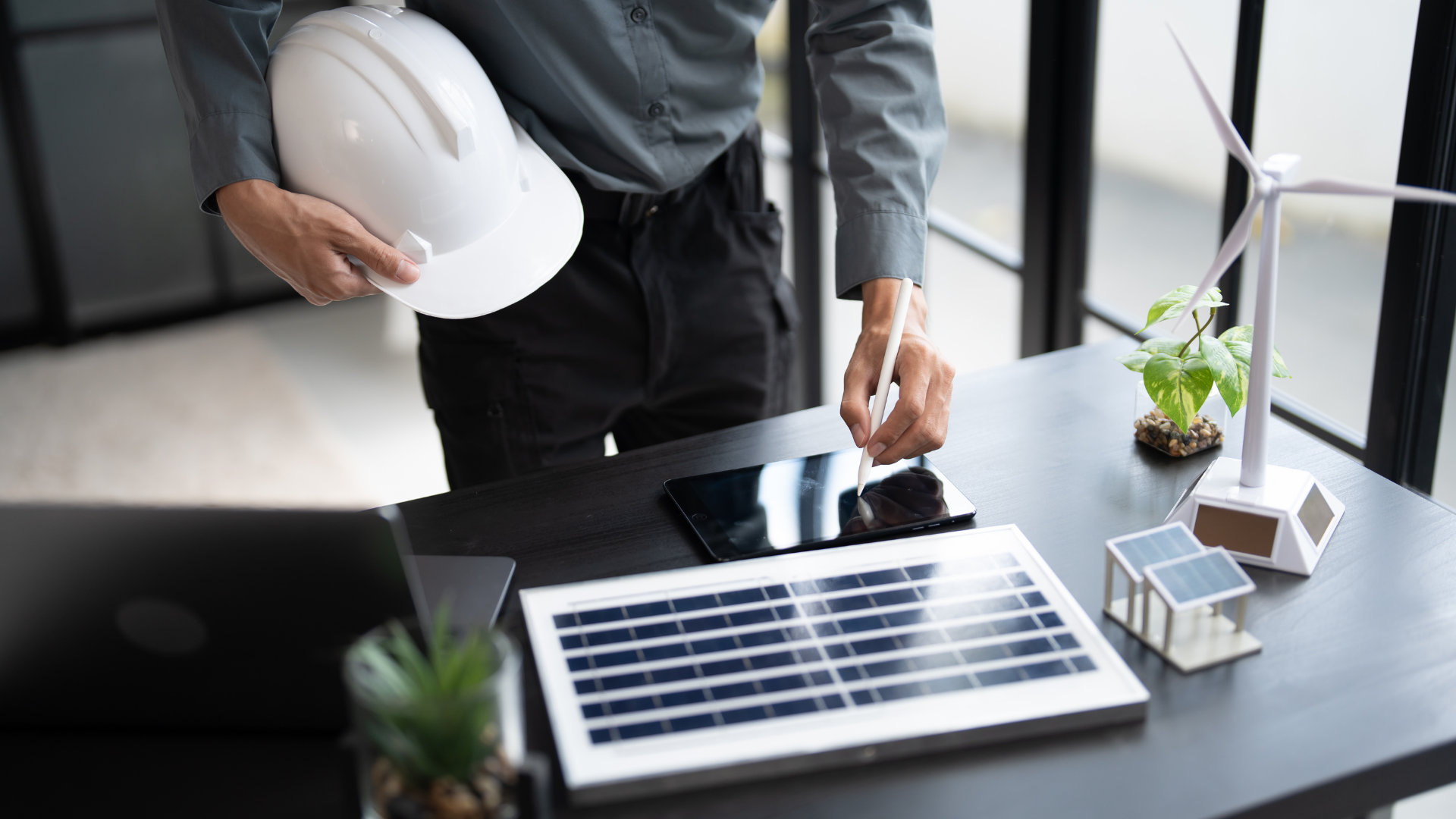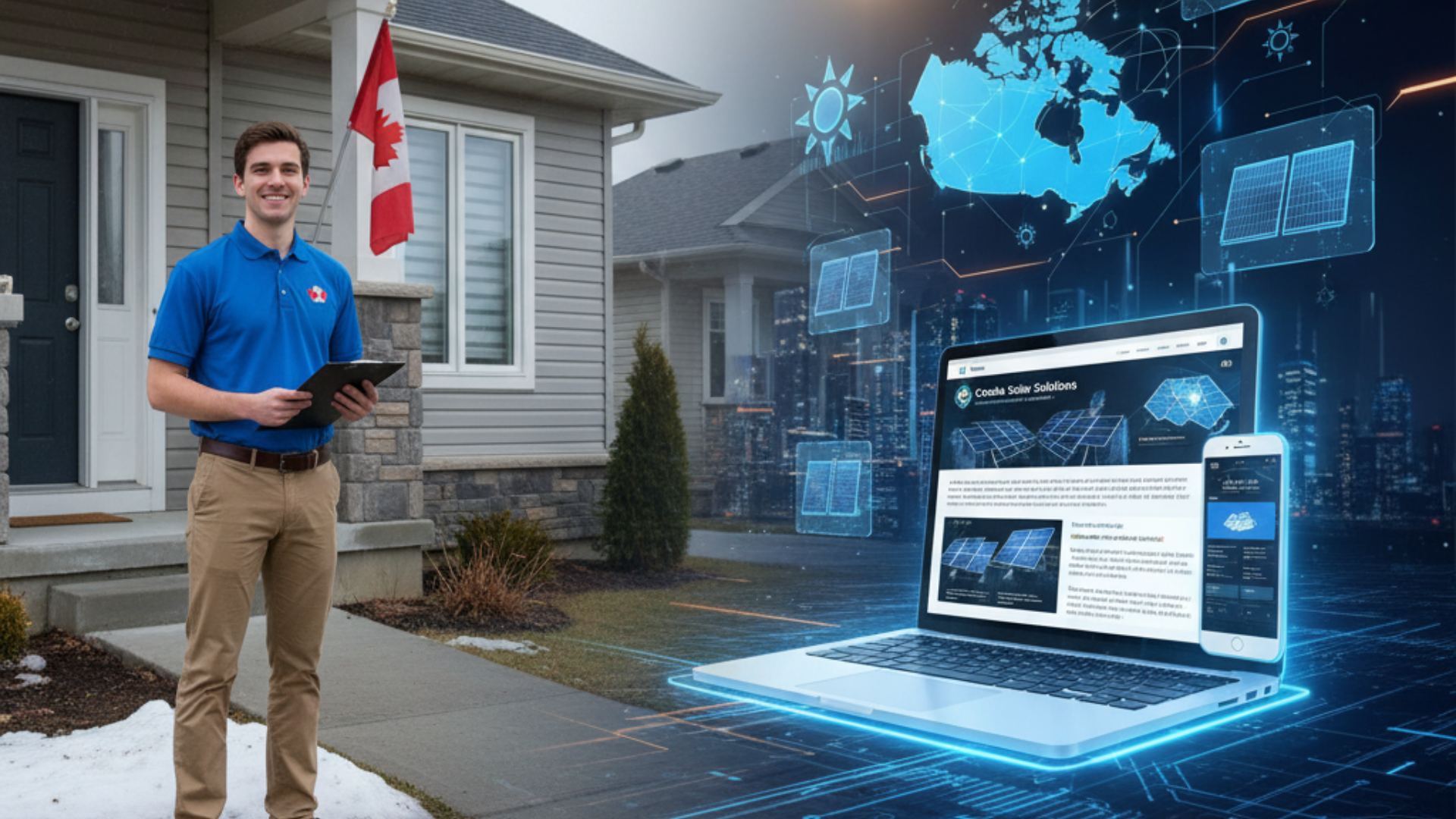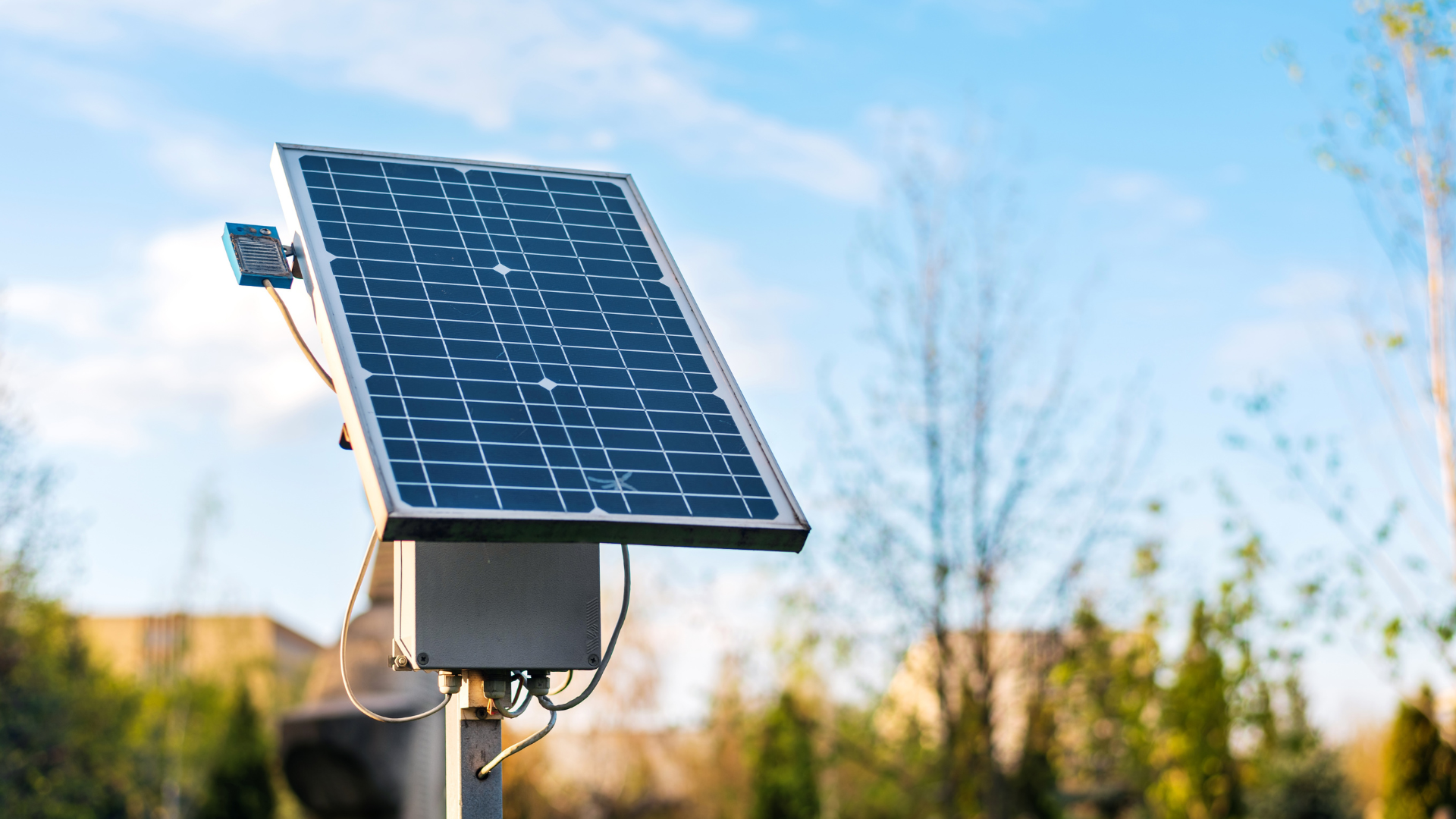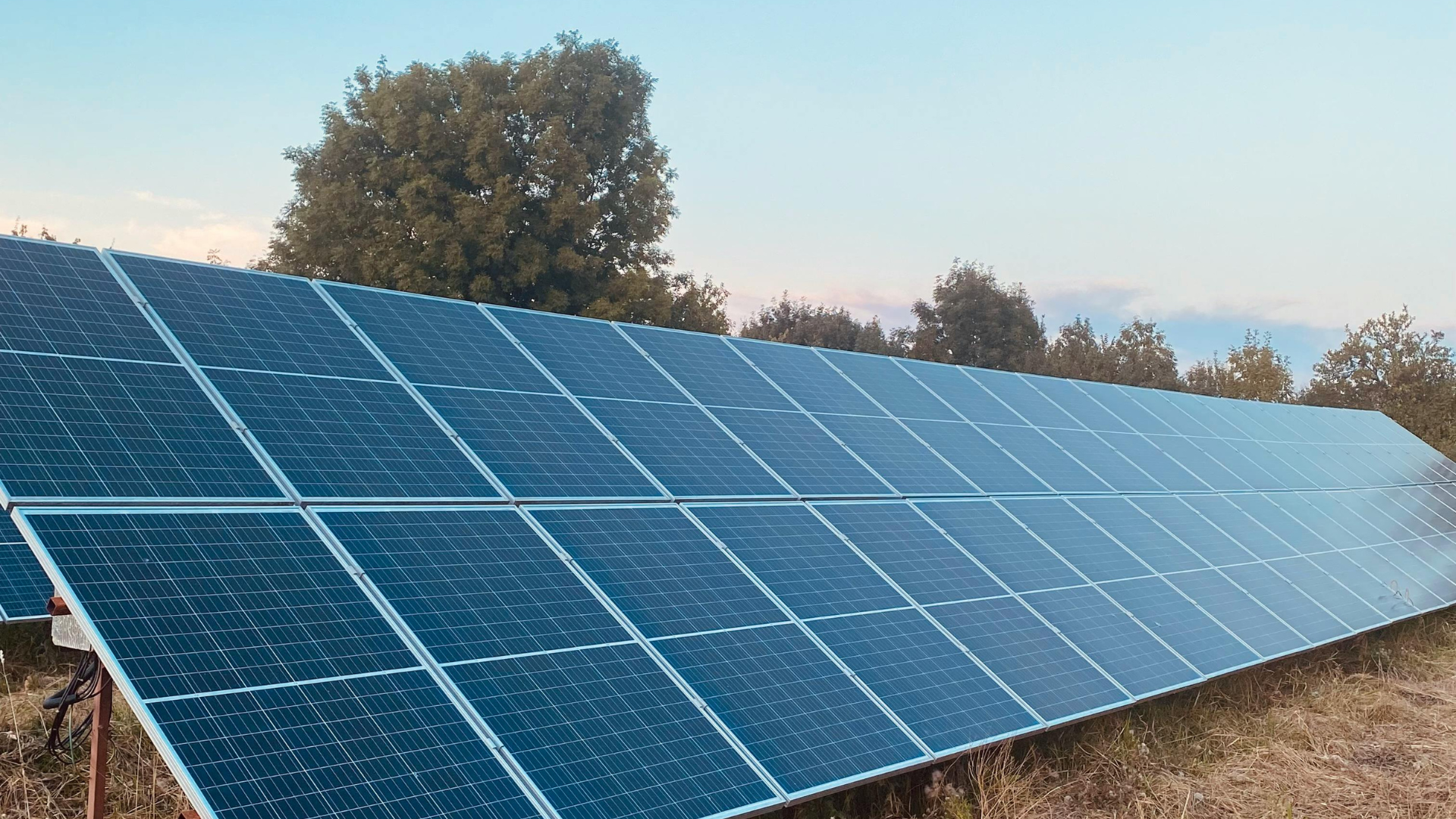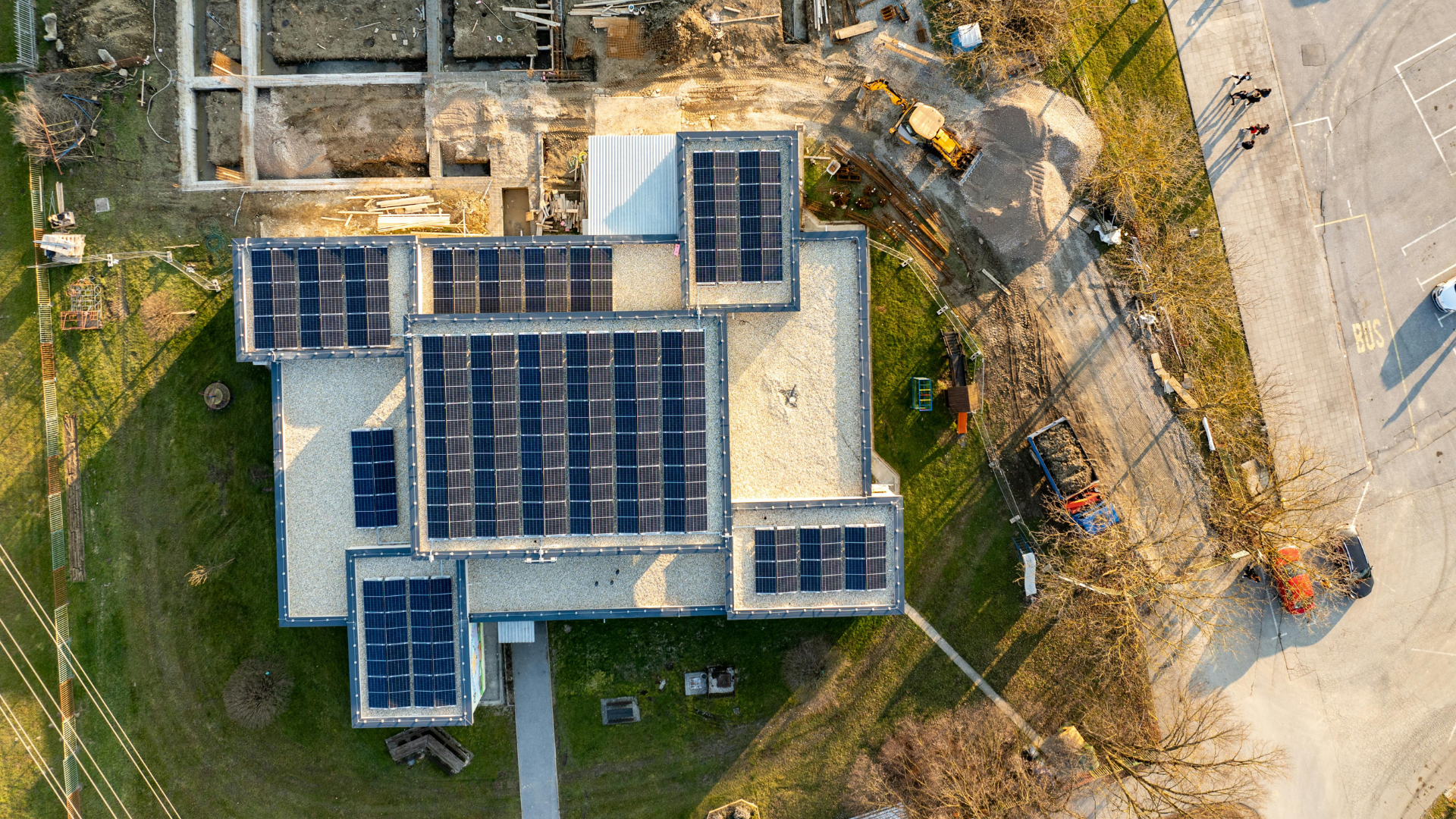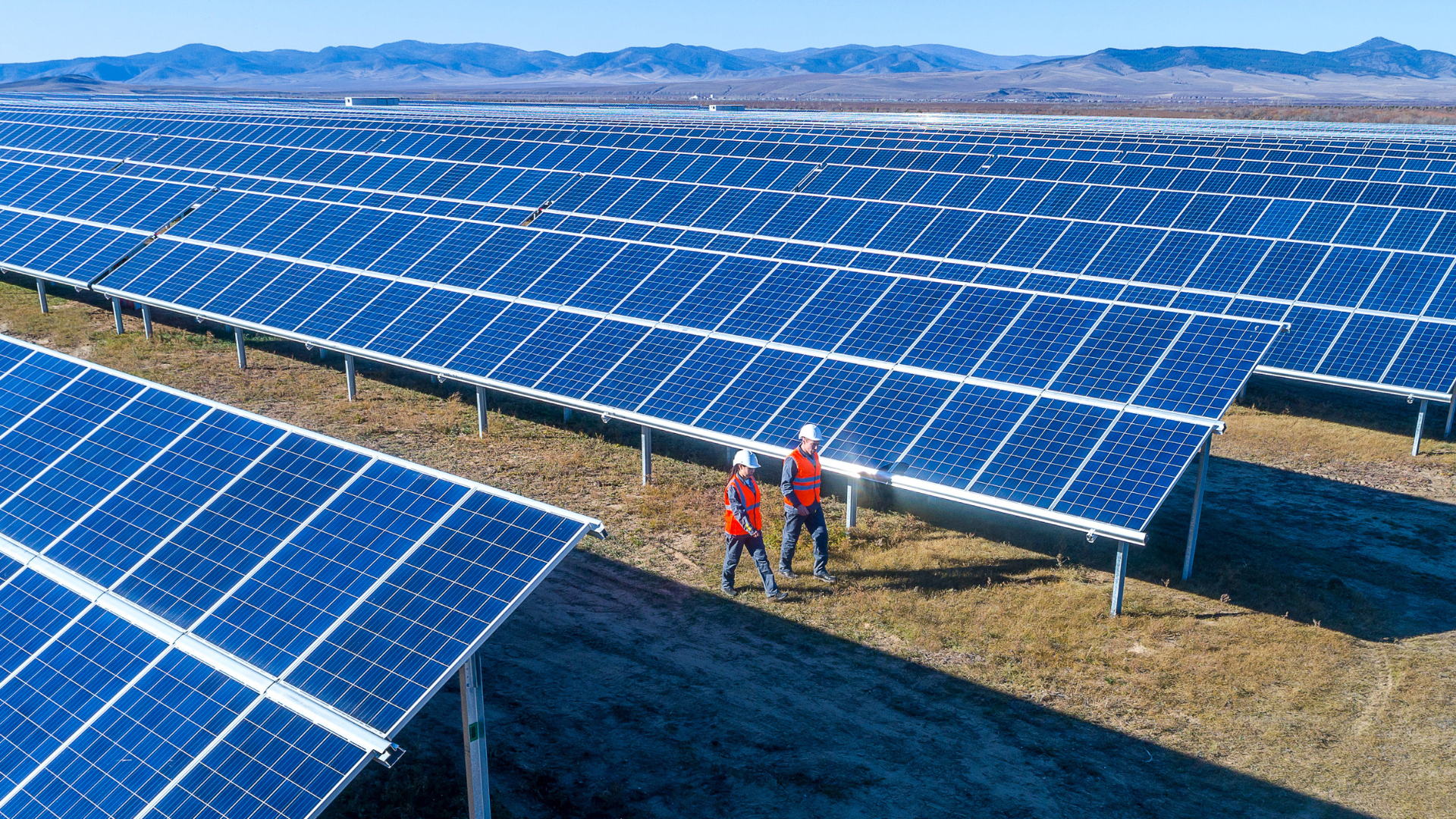June 19, 2023
So, you’re ready to go solar, great choice!
But before you start picturing panels on your roof and lower power bills, there’s one crucial step you can’t skip: sizing your solar system.
Get it wrong, and you’ll either underpower your home or overspend on a system that could power a small spaceship. Get it right, and you’ll hit the sweet spot, maximum efficiency, lower costs, and long-term energy freedom.
In this guide, we’ll walk you through how to size a solar system correctly, so your setup captures just the right amount of sunshine without burning through your budget.
A Step-by-Step Guide To How to Size a Solar System for Maximum Efficiency
Planning to go solar? Before you install panels, you need to size your solar system correctly. The right system ensures maximum efficiency, optimal energy savings, and a solid return on investment. This guide explains how to calculate your energy needs, select the optimal setup, and avoid common sizing errors.
Whether you’re a homeowner or solar professional, learn how to design a perfectly balanced system that captures just the right amount of sunlight.
Key Takeaways
- Proper system sizing is the foundation of solar efficiency. Knowing your energy consumption, local climate, and sunlight availability ensures your solar setup performs optimally and reduces electricity costs.
- Accurate calculations prevent underperformance or overspending. Sizing your solar system correctly helps balance energy production and installation costs while maximizing ROI.
- Professional consultation guarantees precision. While online calculators are useful, working with certified solar installers ensures your system is tailored to your property’s layout, shading, and energy goals.
- A well-sized solar system delivers long-term reliability. With proper design, installation, and maintenance, solar systems can power your home efficiently for 25–30 years with minimal upkeep.
Why Proper Solar System Sizing Matters
As more and more people look towards renewable energy sources to power their homes, sizing a solar system becomes increasingly important.
The size of the solar system you need will depend on several factors, including your energy needs, the local climate, and the orientation and shading of your roof.
How the Right Size Impacts Efficiency and Cost?
It's important to obtain an accurate sizing estimate to ensure you can generate enough energy to power your home, while also considering the installation costs. Additionally, an appropriately sized solar panel will help you maximize your return on investment and reduce your reliance on traditional energy sources.
Conducting thorough research and consulting with professionals is crucial to ensuring that you select a solar panel that is the right size for your home and meets your specific energy needs.
Step-by-Step Guide to Sizing Your Solar Power System
Calculating the size of a solar system involves several steps. Here are the general steps to follow:
Step 1: Calculate Your Daily Energy Usage:
The first step is to determine how much energy you use on a daily basis. You can look at your utility bills to see how many kilowatt-hours (kWh) you use each day and the average monthly kWh usage.
Step 2: Find Out Your Peak Sun Hours:
The amount of energy your solar panels can produce depends on the amount of sunlight they receive. You will need to determine the number of peak sun hours your location receives. Peak sun hours are the hours during the day when the sun is strong enough to produce usable energy.
Step 3: Estimate Your System Size (kW):
To calculate the size of the solar system you need, you will need to divide your daily energy usage by the number of peak sun hours you receive.
For example, if you use 30 kWh of electricity per day and your location receives 5 peak sun hours per day, you will need a 6 kW solar system (30 kWh divided by 5 hours).
Step 4: Adjust for System Efficiency Losses:
Solar panels are not 100% efficient, so you will need to adjust your calculations to account for system losses. A general rule of thumb is to multiply the size of the solar system by 1.2 to account for losses due to shading, wiring, and other factors.
In the example above, a 6 kW system would become 7.2 kW (6 kW x 1.2) to account for system losses.
Step 5: Consider Future Energy Growth:
Finally, consider your future energy needs when sizing your solar system. If you plan to add more electrical appliances or electric vehicles in the future, consider installing a larger solar system to accommodate these additional needs.
It is essential to note that these calculations are rough estimates, and it is advisable to consult a qualified solar installer to determine the optimal size of solar panels for your specific needs and location.
Here's a blog in case you are curious about how many solar panels are required to power a house.
Determine The Type Of System Necessary
Choosing the right type of system can make a significant difference in the system's overall efficiency, as well as its cost and longevity. Whether it's a grid-tied system, off-grid system, or hybrid system, each type has its benefits and limitations that must be evaluated before making a decision.
With careful consideration and professional guidance, it's possible to select a system that meets your specific needs and provides clean, renewable energy for years to come.
Location of your home and climate:
When installing a solar system in your home, it's essential to consider the location and climate of your area.
For example, in a place with colder climates and more cloudy days, it's essential to select a system that can withstand those conditions. You'll want to work with experienced professionals who can evaluate your home's location and recommend the optimal number of solar panels for your needs.
With the right system in place, you can save money on your energy bills and reduce your carbon footprint while enjoying all the benefits of solar energy. By considering the unique factors of your specific location and climate, you can make an informed decision about your solar panel installation that will pay off for years to come.
Using online tools and resources:
With the advent of technology, it has become easier than ever to determine the type of solar system that would best suit your needs. Online tools and resources offer a wealth of information on various types of solar systems, including their benefits, drawbacks, and associated costs.
These resources enable you to make an informed decision based on your preferences, budget, and location. Whether you are looking for a grid-tied, off-grid, or hybrid solar system, online tools and resources offer a comprehensive guide that takes you through the process step by step.
With a little research and the right online tools, you can easily determine the type of solar system that will provide you with the most effective and efficient energy solution.
Choosing the Right Solar System Type for Your Home
Choosing the right solar system can be a daunting task, especially considering the variety of options available on the market. However, it is essential to invest in a system that meets your unique energy requirements and offers a favorable return on investment.
Take the following things into consideration:
Grid-Tied vs Off-Grid vs Hybrid: What’s the Difference?
There are several types of solar systems, but the most common types include:
Grid-tied solar system:
This type of solar system is connected to the main power grid. The energy produced by the solar panels is used to power your home, and any excess energy is sent back to the grid for others to use.
You may also be eligible for net metering, which allows you to receive credits on your utility bill for the excess energy you produce.
Off-grid solar system:
This type of solar system is not connected to the main power grid. The energy produced by the solar panels is stored in batteries, which can then be used to power your home.
Off-grid solar systems are typically used in remote locations where there is no access to the main power grid.
Hybrid solar system:
This type of solar system combines the features of both grid-tied and off-grid solar systems. It is connected to the main power grid but also has a battery backup system to store excess energy.
This allows you to use solar power during the day and switch to battery power during power outages or peak energy usage times.
Concentrated solar power (CSP) system:
This type of solar system uses mirrors or lenses to focus sunlight onto a small area, which generates heat that is used to produce electricity. CSP systems are typically used in large-scale solar power plants.
Building integrated photovoltaic (BIPV) system:
This type of solar system involves integrating solar panels directly into building materials such as roofs, windows, or walls. BIPV systems are gaining popularity in new construction projects, offering a more aesthetically pleasing and streamlined approach to solar power.
Factors That Influence Solar Efficiency
When selecting a solar system, several key factors should be considered. Here are some of the most important ones:
1. Energy needs:
The first thing to consider is your home's energy usage and needs. You will need to determine how much solar power you use each day, and how much of that energy you want to produce using solar power.
2. Location:
Your location plays a big role in determining how much sunlight your solar panels will receive. You will need to consider factors such as the amount of sunlight you receive, the angle and direction of your roof, and any shading that may occur throughout the day.
3. Budget:
Solar systems can be expensive, so you will need to consider your budget when choosing a solar system.
Keep in mind that solar panel installation costs have decreased significantly in recent years, making them more accessible to many people.
4. Type of solar system:
As mentioned earlier, there are several types of solar systems to choose from. You will need to determine which type of system is best suited to your needs and budget.
5. Quality of components:
It is essential to select high-quality components for your solar system, including high-efficiency solar panels, inverters, and batteries. This will ensure that your system is reliable and efficient.
6. Warranty and maintenance:
Solar systems require regular maintenance and may need repairs over time. Ensure that you choose a system with a good warranty and consider the maintenance requirements before making a purchase.
7. Installation and permits:
Installing residential solar panels requires permits and proper installation by a qualified professional. Ensure that you choose a reputable installer and consider the installation and permit costs when selecting a solar system.
Research And Compare Different Solar Installation Companies In Your Area
With the increasing demand for solar technology, a wide variety of solar installation companies are available to choose from.
To make an informed decision, it's essential to research and compare the different companies in your area. This way, you can determine which company has the experience, skills, and pricing that best suit your needs.
If you're considering a solar installation for your home or business, take the time to research the different companies in your area and find the one that best suits your needs.
Installation And Maintenance Of Solar Panels
It's important to find a reputable installer who can guide you through the process, from selecting the right size and type of panels to ensuring proper placement and wiring. Regular maintenance is also crucial for the longevity and efficiency of your solar panels.
This includes cleaning, monitoring performance, and addressing any issues that may arise. With the right installation and maintenance, solar panels can provide a reliable and cost-effective source of energy for years to come.
Hiring a professional installer
When it comes to solar panel installation, it's important to consider hiring a professional installer. While the idea of a DIY installation may be tempting, there are many nuances and complexities involved in properly installing solar panels.
A professional installer has the experience and knowledge needed to ensure that your solar panel system is installed correctly, efficiently, and safely. They can also assist with selecting the best location for installation and ensure that any necessary permits and regulations are met.
By choosing a professional installer, you'll have peace of mind knowing that your solar panel investment is in good hands.
Maintenance And Upkeep
It's essential to remember that, like any other technological equipment, solar panels and their components require regular maintenance and care to continue functioning efficiently.
Keeping solar panels clean and free from debris, checking for damage or wear on wires and other hardware, and monitoring the system's performance are all essential steps in ensuring that your solar system continues to meet your needs for years to come.
By taking the time to properly maintain your solar system, you'll not only maximize its energy-producing capabilities but also reduce the risk of costly repairs down the line.
This blog might help if you are still confused whether you need to clean solar panels?
Final Thoughts: Investing in the Right Solar System
Installing a solar power system for your home is a wise, energy-saving, and cost-effective decision. It is crucial to select the appropriate solar system size and type for your specific needs, while also considering the local climate and the characteristics of your home.
To find the right system for you, research different types of systems and consider factors such as energy usage, location, the amount of solar energy you need, and the number of panels in a solar array. Compare installation companies in your area and determine whether to DIY or hire a professional installer to install solar panels.
Ultimately, gain a thorough understanding of the lifetime costs and benefits associated with installing solar panels. With this knowledge, you can make the most informed decisions about installing a solar power system that best suits all your needs.
Design Smarter, Size Faster with Sunbase
Tired of complex calculations and manual design work? Sunbase Solar Design Software helps solar professionals size, design, and model systems for peak efficiency in minutes.
Click here to book your 15-minute demo to deep-dive into software!
FAQ's
1. What does “sizing a solar system” mean?
Sizing a solar system means determining how many panels and what capacity you need to meet your household or business’s electricity consumption efficiently.
2. How do I calculate the size of my solar system?
Start by checking your average monthly energy use in kWh. Divide that by your area’s average sunlight hours, then adjust for panel efficiency to find your ideal system size.
3. How can software help with solar system sizing?
Tools like Sunbase Solar Software use advanced modeling to calculate optimal system size, taking into account factors like location, shading, and consumption patterns, thereby saving time and boosting accuracy.
One Platform. Zero Chaos. Run Your Entire Business in One Place.
Sunbase replaces your CRM, proposals, scheduling, job tracking, and reporting tools — all inside one clean, connected platform.
About Sunbase
The All-In-One Platform to Run Your Entire Business
Sunbase helps you organize operations, streamline daily workflows, and manage everything - from first customer contact to final project deliver- in one connected system.
Our Mission
- Organize your business.
- Optimize your workflow.
- Automate what slows you down.
Why Businesses Choose Sunbase
One Connected Workflow
Replace scattered tools and manual processes with a single platform that brings together your team, tasks, customers, jobs, and performance data.
🌎 Global Presence
Serving the United States, Canada, India, LATAM, Australia, and 10+ international markets.
👥 11,000+ Users
Trusted by contractors, installers, project managers, sales teams, and field technicians.
🏗️ Built for All Sizes
From small contracting teams to fast-growing enterprises, Sunbase adapts to your workflow.
Useful Links For You
Stop Managing Your Business Manually. Automate It.
Sunbase automates workflows, reduces mistakes, and helps your team get more done - without hiring extra staff or juggling multiple tools.



